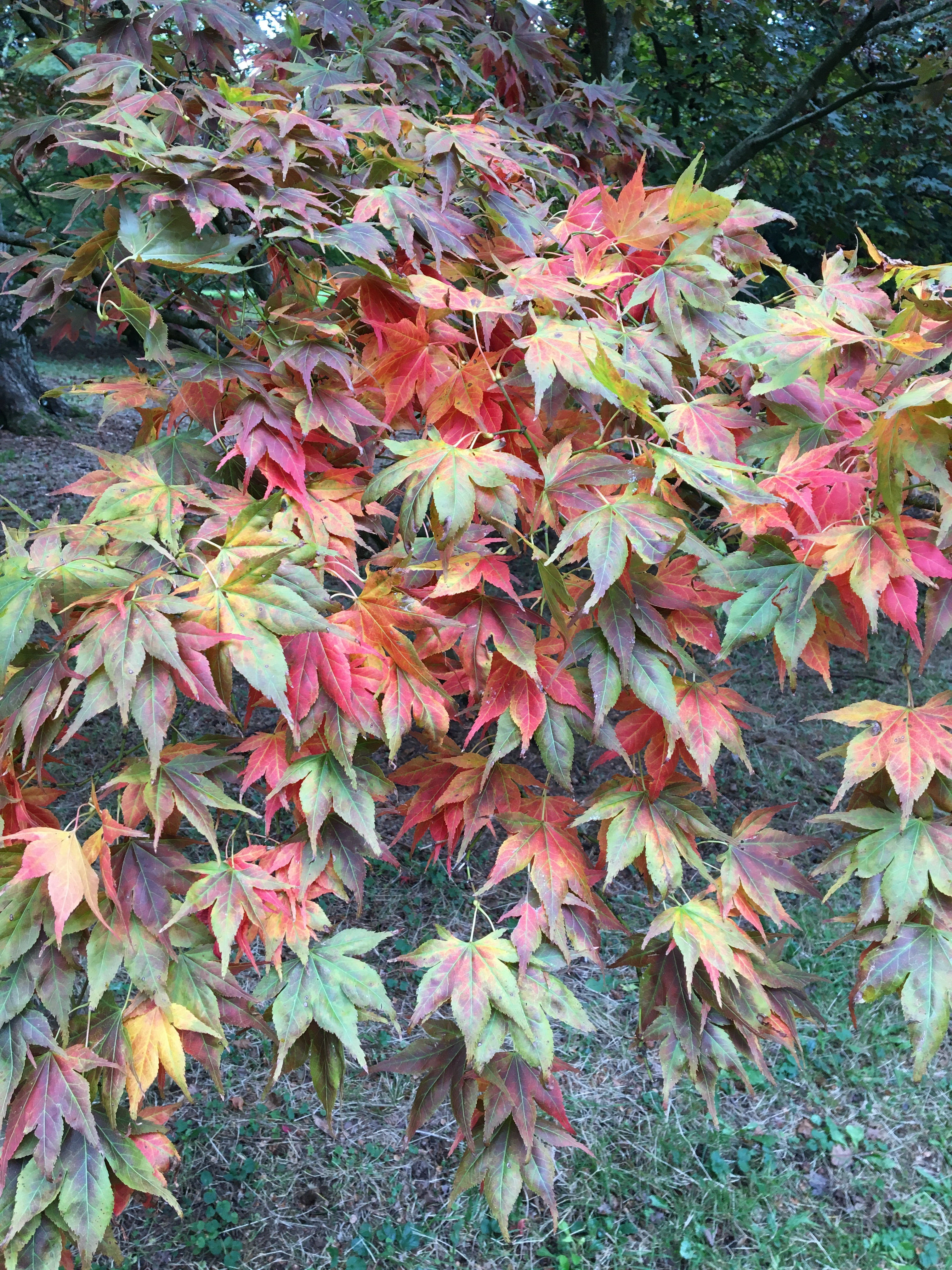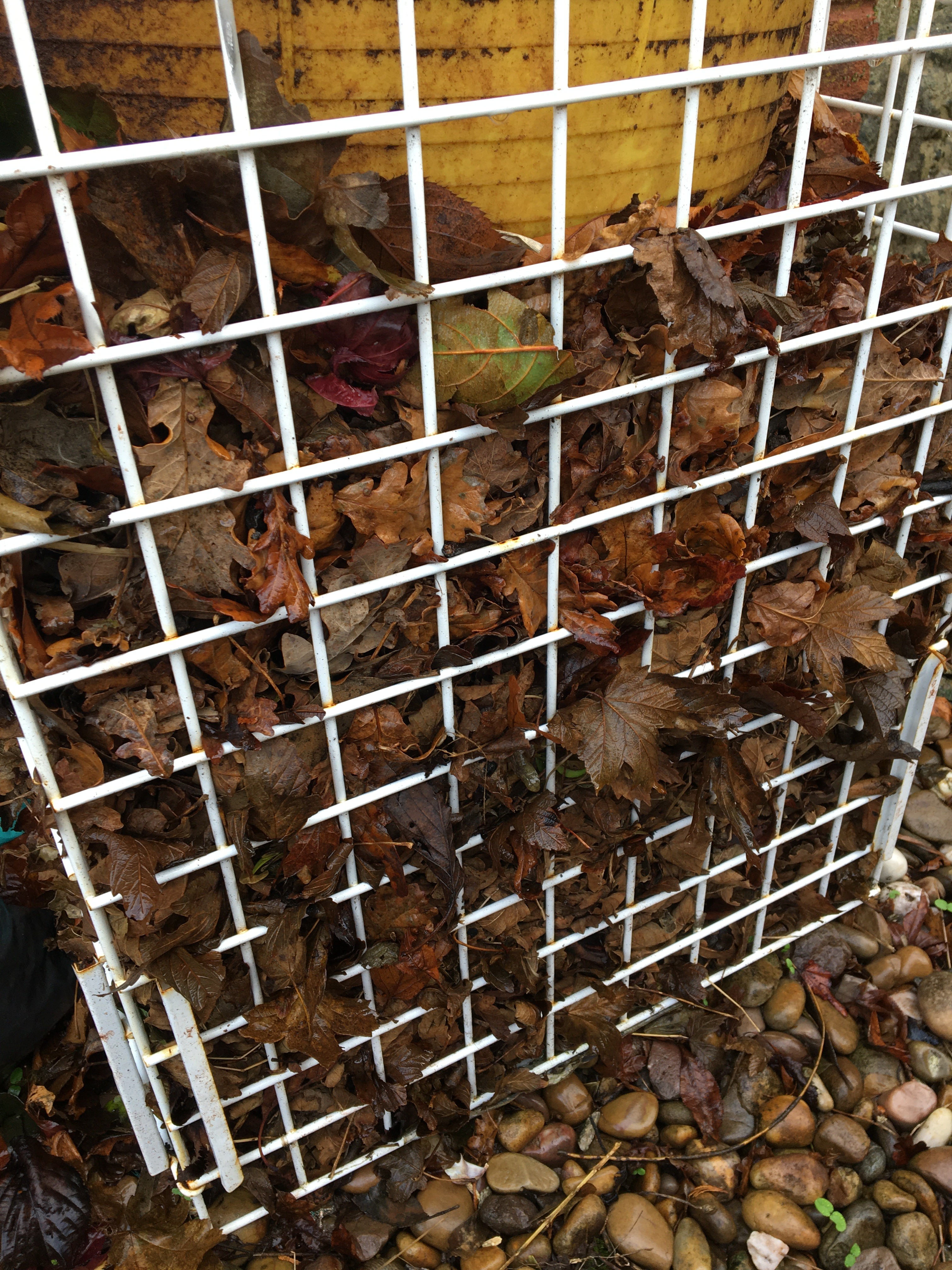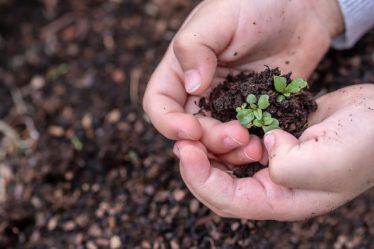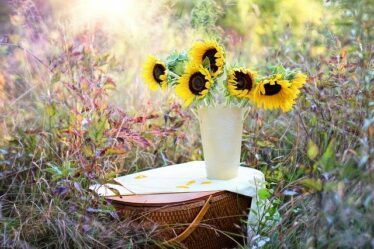
Should I Leave The Leaves Where They Fall In My Garden?
My customers often ask me the perennial question “Should I Leave The Leaves Where They Fall In My Garden?”
There are differing schools of thought regarding whether or not to clear leaves away from beds, borders and lawns.
Here I will discuss the advantages of leaving them where they fall.

5 Top Reasons To Leave The Leaves In Your Garden
- All leaves will naturally break down over winter, turning into a valuable composted mulch, that you can use as a soil improver. This will provide much-needed nutrients for your plants and soil
- Leaves protect plants and bulbs from harsh winter weather
- They help to keep the weeds down over winter. A layer of leaves will slow down weed germination.
- A layer of leaves in the soil will provide wildlife with shelter and food. Myriads of insects and small mammals will hibernate amongst leaves and plant debris through winter. Some will use leaves for laying eggs. Birds and small mammals can find shelter and food amongst fallen leaves.
- It saves you the job of clearing them. I’m all for saving myself a chore, giving me more time to do winter seed planting and propagation. Or simply to enjoy a cuppa in the peace and quiet of my outdoor space.
Reasons Against Leaving The Leaves Where They Fall
They can cause a slip hazard
Fallen leaves on pathways, driveways and paved areas should be cleared as they can cause a slip hazard when they become wet and start to rot down.
Best Cordless Leaf Blower Review
If they are not swept away they will end up as soil, leaving paving, bricks, concrete etc looking a mess. Which will then require cleaning. Also, it’s best to rake them off of gravelled areas to maintain the look and style that gravel affords. If left on gravel leaves will break down into soil, which will unfortunately encourage weeds to grow.
Best Patio Cleaner Sika Mould Buster Review
A deep layer of leaves can cause disease when they get wet and start to break down, so always ensure that any plants that still have their leaves on them are not swamped by fallen leaves as this may cause the plant to rot and suffer damage. It is better to place your gathered leaves around the base of plants, on the soil.
Leaves inhibit light which on the borders will help to keep the weeds down but a lack of light will also stop the healthy growth of lawns. This can cause patchy growth, moss and poor aeration. Which in turn will mean damage limitation work in spring.
Therefore, any large amounts of leaves that have gathered in one particular area on lawns will require clearing.
However, a small scattering of leaves left on the lawn will break down and feed the lawn for you.
Alternatively, go over the lawn with the mower without the grass collection box fitted. The leaves will be mulched and mixed with the grass cuttings and can be left in situ on your lawn over winter. Mulching leaves into the lawn in this way gives it a winter feed.
Best Cordless Patio Weeders Review
Why Is Leaf Mould So Good?
Leaf mould contains vital nutrients that are invaluable to gardeners to help keep the soil healthy. It can be used to protect the soil from heavy rainfall as it helps to stop nutrients from being washed away.
Fallen leaves contain an important substance called lignin. Some leaves have higher levels of lignin and are lower in nitrogen than others which means they take longer to decompose. These include oak, hornbeam, birch and magnolia.
Leaves that are lower in lignin and higher in nitrogen include ash, poplar, acer, cherry, elm, linden, maple, willow.
I had lots of trees in my old garden, mainly maple, hawthorn, birch, eucalyptus and magnolia, never did I clear the leaves off the borders. The result was nutrient-rich, loamy, workable soil.
Healthy soil equals healthy plants.
Which Leaves Make The Best Leaf Mould?
Leaves and conifer needles will break down into leaf mould given time. Leaves from oak, beech and hornbeam produce a wonderful, crumbly soil improver.
Thick leathery leaves from trees such as horse chestnut, sweet chestnut and magnolias can be shredded to assist their decomposition.
Once shredded, add them to the leaf mould collection or, they can be added to the general compost bins.
Conifer needles and hedge clippings will eventually rot but can take several years to do so. The best place for them is the compost bins.
Pine needles produce acidic leafmould, an ideal product for mulching your ericaceous plants, such as azalea, rhododendrons, pieris, camellias and blueberries. Make separate heaps for these.
How To Make Leaf Mould
Autumn to early winter is when leaves start to fall and the time to start the process of mulching leaves for use in your garden. We gardeners consider them an invaluable source of nutrients. We are loath to see them go to waste.
You may find many gardeners rubbing their hands with glee at the prospect of such natural goodness.
Shop For Compost Bins and Wormeries.
Collected leaves can be stored in hessian or plastic garden sacks, baskets, or compost bins.

You can make bins for making leaf mould using chicken wire and wood pieces.
Any containers basically, that have some holes in for air to get through. Keeping the leaves damp will aid the leaves decomposition.
It may take a few years for them to completely break down but you will have what we gardeners think of as black gold. A product that is perfect for use in your gardens.
Leaf mould can be used on its own or to mix with homemade compost to make a rich, healthy potting/growing medium.
What’s more…it’s a free product, given to us by Nature.
How To Make Compost For The Garden
What could possibly be better.?
I hope that this article about the use of leaf mould and leaves has been helpful and interesting. Please share with your friends and family and on social media.
Thank You
Happy Gardening





Hello Louise, I always leave them on the garden too, enough jobs to do in the garden without adding another one. They break down overtime and give lots of goodness to the soil which saves on the cost of compost or soil improvers. Great advice, thank you for posting should I leave the leaves where they fall in my garden
Hello Alison, thank you for your message, I’m pleased to hear that you appreciate the advice, your garden soil benefits from being healthy, so in turn so do your plants.
Best Wishes
Louise
I leave it in the garden. nice view I think.
Hello Marla,
I agree entirely, leaves look pretty and add nutrients to the garden soil and lawns. As well as providing some winter shelter for wildlife.
Hey Louise, I don’t know if we should leave or collect them. However, the view really amazes me 🙂
Hi Amanda,
I think it is best to leave them, as they will add protection, shelter and nutrition to soil and lawns. If there is a large amount on lawns in places then I tend to clear them but a small amount is beneficial.
Happy Gardening
Louise
I find it interesting how a cleaning service could help you transform your garden before you host events around your property. My uncle is looking into using his backyard as a recreational spot for these events after the pandemic. I should probably discuss this idea with him so he wouldn’t have to overlook his fallen leaves during autumn.
Hi Zachary,
Thank you for your comments. I appreciate that you would want the garden to look tidy if you are hosting outdoor events. Paths, walkways etc should be swept clear of leaves and debris to avoid slip hazards. Leaves on the gardens could be left though as per my article. Or collect them and keep them in hessian sacks or mesh containers to allow them to rot down, the resulting leafmould is fantastic for using in gardens.
Best Wishes
Louise